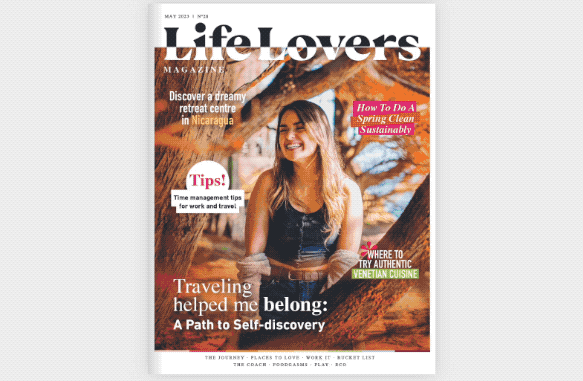How to Choose the Right Sustainable Brands
- Natalie LaBarbera

- Feb 1, 2023
- 3 min read
With so much information (and misinformation) out in the world about sustainable brands, it can be hard to sift through greenwashing o find brands that represent your values. And what exactly is a sustainable brand? To be truly sustainable, brands should take into account their impact on the environment, people, and animals.
There’s a lot to think about when deciding where to shop, from toxic chemicals and dyes, to recyclability, to the environmental and ethical costs of animal-based materials, and so much more. Understandably, this can be quite overwhelming, especially if you’re just starting out with sustainability, so here is a taste of what you need to know about choosing the right brands for you.
By Natalie LaBarbera

When it comes to whether I want to support a brand or not, these are my main considerations, the type of materials they use, product circularity efforts, and if vegan options are available.
For materials, some of the least environmentally taxing fabrics you can choose include linen, organic and recycled cotton, Tencel™ lyocell and modal, MIRUM, and hemp. These fabrics don’t release microplastics when washed like synthetics such as nylon and polyester do, and take a fraction of the time to biodegrade. As an exception, recycled synthetics can be a good option to repurpose, choose fabrics that have already been made and keep them out of landfill - just remember to wash these responsibly (try a guppyfriend bag or something similar). As for animal leather, it’s best to avoid it in favor of plant-based bio-alternatives like MIRUM or mycelium leathers because the traditional material is typically treated with toxic chemicals to make it wearable and is likely coated in plastic if it’s patent.
Circularity is one of the biggest efforts in brand sustainability now. It’s a process which involves using materials from already produced items to create new ones. When looking into new-to-you brands, check to see if they offer any kind of take back programs and if they state that their products can be recycled and reused. Some brands even have their own second-hand programs where people can sell and buy directly on the brand website so you can be confident items are authentic and in good condition. These are great ways to give old items a new life and keep them out of landfill, where synthetics can sit for up to hundreds of years.

Looking for vegan options might not seem like an obvious concern for the planet, but there are tons of environmental effects of producing animal-based materials. The process of turning skins into wearable material involves many steps, and in the tanning and dyeing processes, in particular, tons of chemicals, including carcinogenics like formaldehyde and chromium are commonly used. These dangerous chemicals are often leaked into nearby water streams, harming aquatic life, and also affect the health of surrounding communities through air pollution. Through these many complex treatment processes, a would-be natural fabric is transformed into one that no longer has the ability to biodegrade. Additionally, leather production has been linked to deforestation in the Amazon and presents many health risks for people in it’s supply chain including perpetration-induced stress disorder for those working in slaughterhouses and cancer for tannery workers.
While this is so much to think about, even focusing on one area of sustainability when choosing brands that are best for you can have a positive impact! It takes time to fully engrain sustainable shopping practices into your daily life, so don’t feel discouraged if you find yourself questioning if a purchase was really the best choice possible and keep continuing to learn. If you need some help while you’re on the go, there are a couple of great apps and websites like Good On You and Ethical Elephant that offer tons of information on responsible brand choices at a glance or you can look to activism groups like Fashion Revolution, Collective Fashion Justice, and Re/Make for advice and education. And don’t forget, the most sustainable items are always the ones you already have!
Sustainable Brand Options:
Patagonia
Boyish
Knickey
Christy Dawn
Culthread
LA Relaxed
Wayre
For Days
Veja
Pangaia
About Natalie LaBarbera
Natalie is a freelance writer who is passionate about ethical fashion and loves traveling the world with her small pup, Dobby.
Writing Portfolio: natalielabarbera.com







